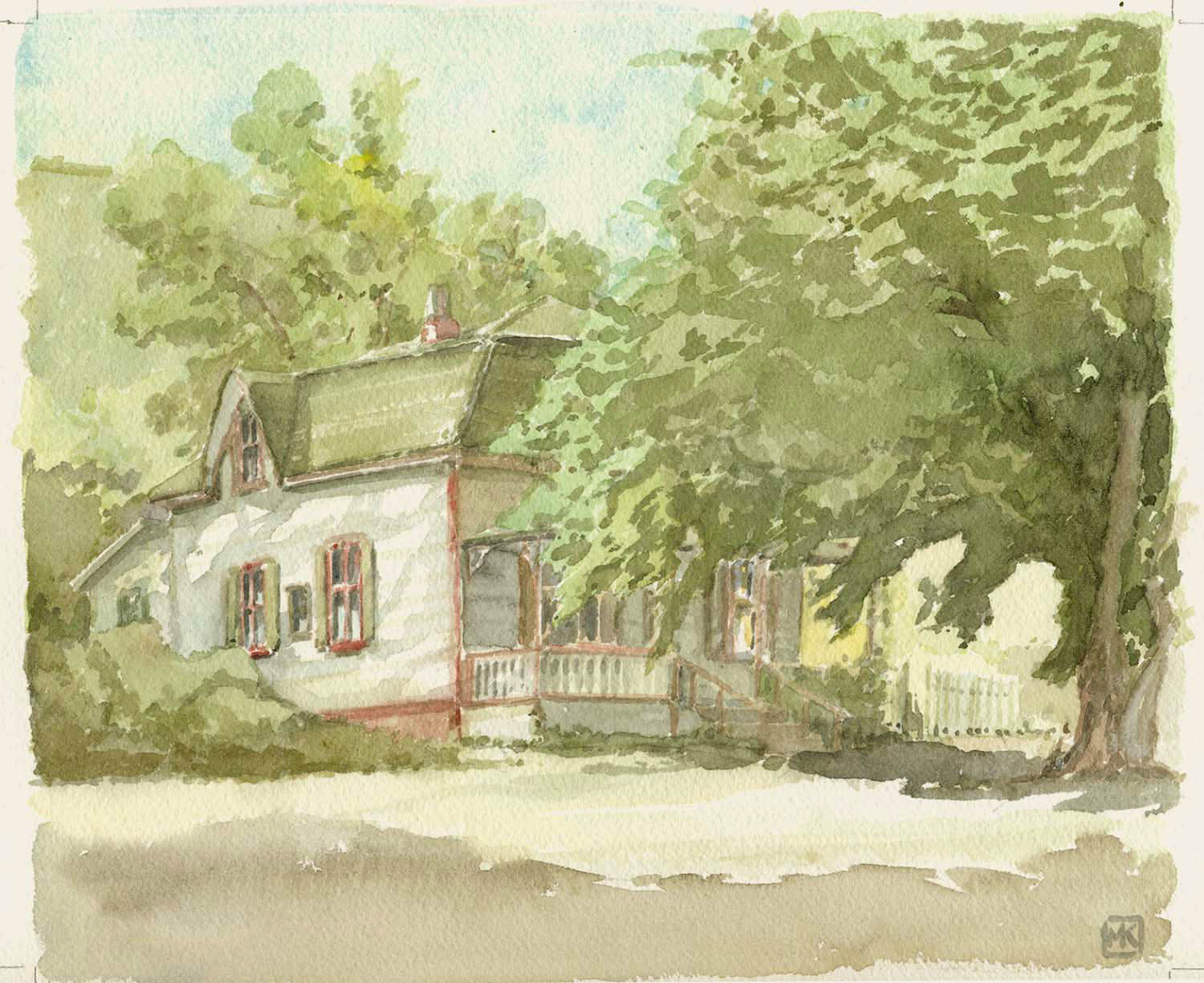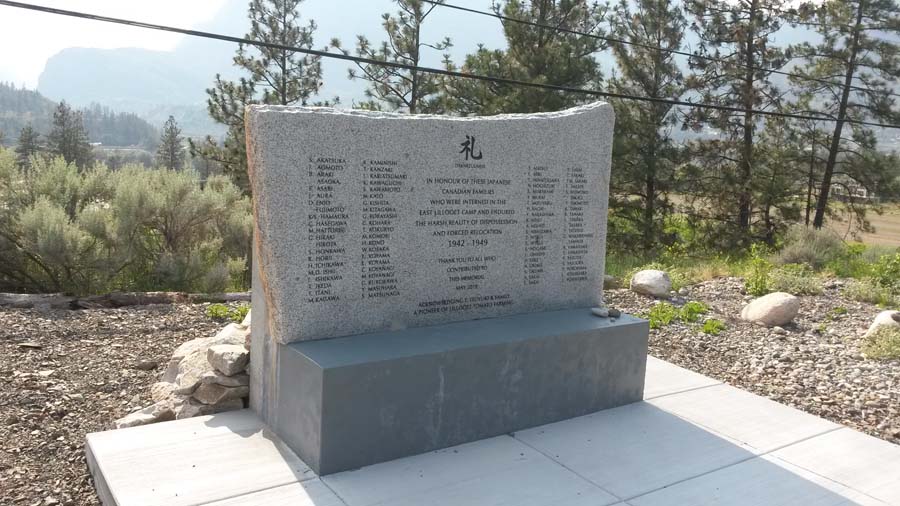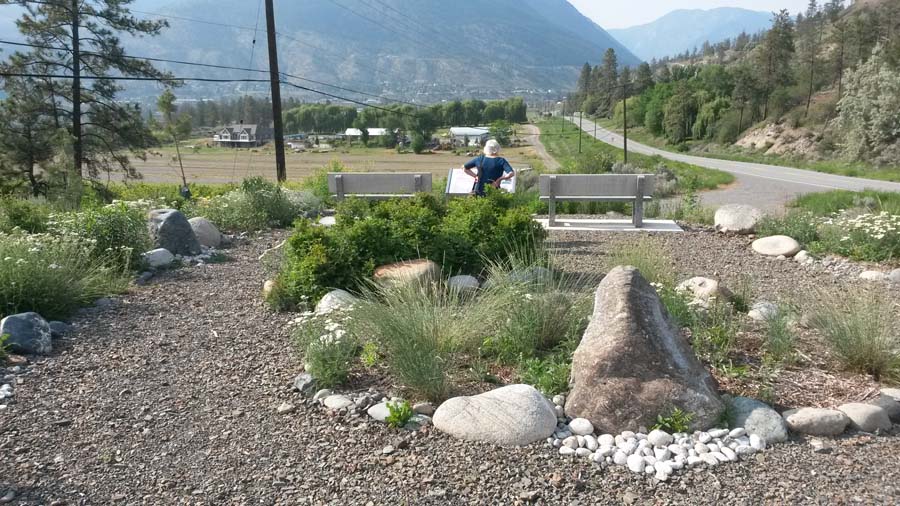Return to main Vanishing B.C. page Return to home page
This page last updated February 6, 2020
© Michael Kluckner

|
Written/sketched 2003: Dr. Masajiro Miyazaki was the second significant occupant of this fine house, which stands on a narrow lane immediately behind Lillooet's main street. It has recently been restored as a museum commemorating his life, following a period when it was a studio/gallery for an artist named Carl Chaplin. With its mansard roof, the house is a rare B.C. example of the Second Empire style, fashionable throughout the western world around 1870. It was built in the 1890s by Casper and Cerise Phair, the former having been the first government agent in Lillooet, a gold commissioner, teacher and merchant. According to the plaque in front of the building, Phair walked to Lillooet from Yale to settle in 1877. It was called Longford House after Mrs. Phair's family house in County Galway. There are a few fine early photos from the Phairs' time in the City of Vancouver Archives, including numbers Out.P.739 and Out P.777 in the Matthews collection. The Phairs were storekeepers in Lillooet for two generations.
Dr. Miyazaki, himself subject to the wartime evacuation from the coast, went to the Lillooet area in 1942 to care for the Japanese-Canadians interned there. Following the war, he bought this house, and over the next four decades distinguished himself in public service to Lillooet and the surrounding area. He donated it to the town in 1984. There were two major internment or evacuation camps in the area (2019: see below for more detailed and updated information). One was the abandoned goldmining town of Minto, now submerged by Carpenter Lake, the reservoir for the Bridge River dam. The other, much larger camp, was in East Lillooet, on the flat occupying both sides of the Lillooet-Lytton highway. The site is now (on the river side of the road) a commercial garden growing vegetables for the local market. According to a map drawn by Taka Tsuyuki and T. Yamashita, presented to the Lillooet Museum in 1991, the "Self Supporting Evacuation Village 1942" was home to about 345 people living in 62 cabins, "12' x 12' and up." In the main part of the community, the houses were lined up neatly in two rows across the highway from the commercial tomato field and vegetable garden, and the school. Water tanks lined the edge of the fields. Photos from the collection of the Lillooet Museum Photographer unknown, 195- Following the lifting of restrictions on the settlement of Japanese-Canadians, in 1949, the community disbanded and many of the residents returned to the coast. |




|
Lillooet's main street about 1960, photographer unknown. The old Victoria Hotel on the right burned down in the early 1980s, but was rebuilt to more or less the same shape and size. An earlier road trip, c. 1912, of the Clarke family from Walhachin. Ph. Richard Clarke The road to Lillooet in 1912 – a trip by Richard Clarke and family from Walhachin to Marble Canyon. Ph. Richard Clarke |
